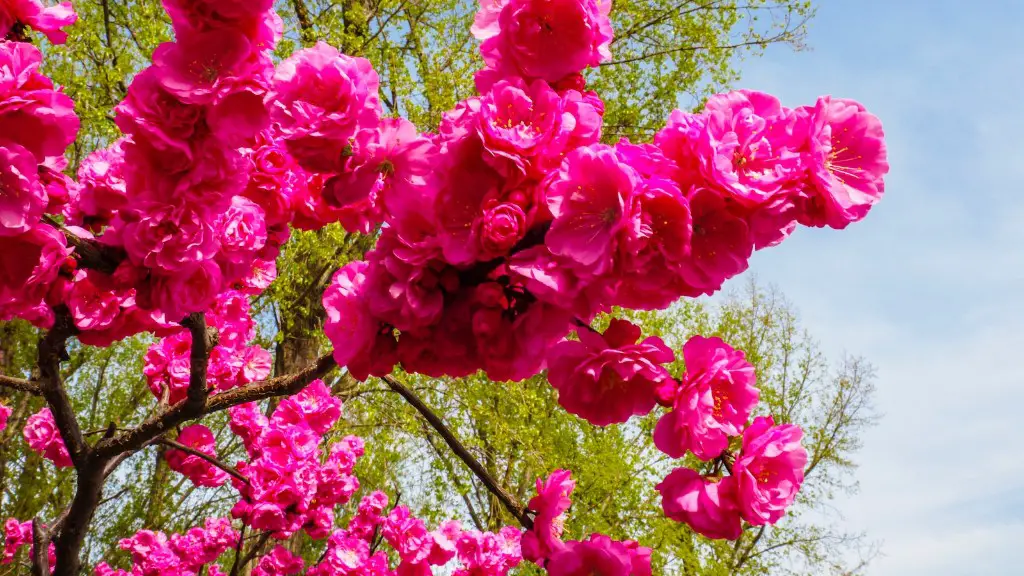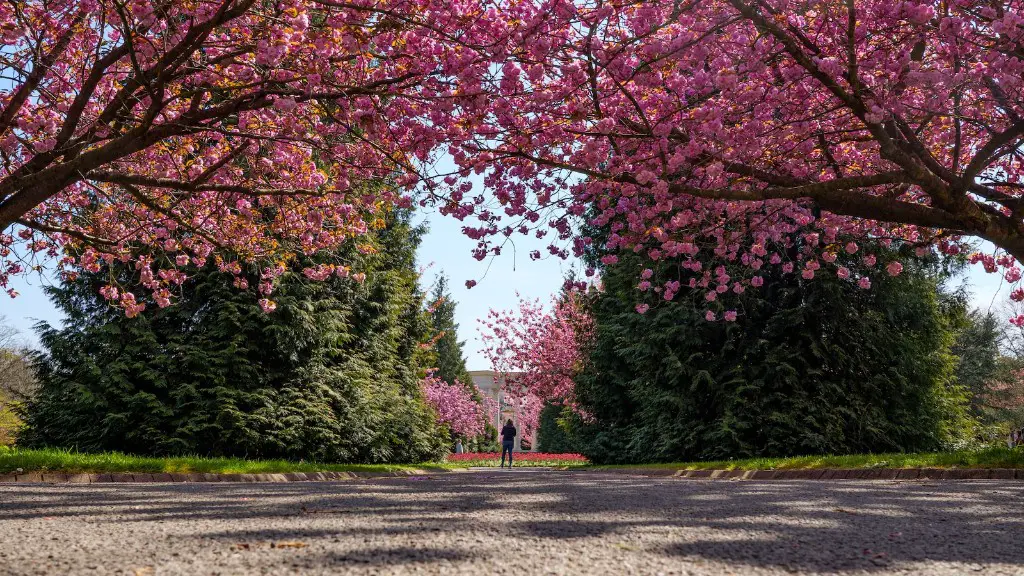Growing a tree from a cherry pit is an exhilarating yet tricky endeavor. It is a great way to get crafting and gardening experience, and is a fun project to do with children. There are many steps to growing a tree from a cherry pit, and it needs to be done with patience and consideration.
To begin, collect cherry pits from ripe cherries and give them a good wash. Lay the cherry pits out on a paper towel and let them dry completely before planting them. Choose containers that are at least two inches deep and two inches wide, such as yogurt containers, plastic cups, or glass jars. Take a few spoonfuls of potting soil and put it in the containers, and make sure it is moist.
Next, dig a small hole into the soil with a pencil and put the cherry pits in the holes. Make sure the pits are evenly spaced, about an inch apart. Lastly, cover the pits with more soil so that one-fourth to one-half of the pits are covered. Put a few drops of water on the soil, and put the containers in a warm spot with indirect sunlight.
To take care of the planted pits, its important to maintain the moisture level in the soil. When the soil is dry to the touch, add small amounts of water until it is moist but not soggy. The planted pits should need water every few days or so.
In a few weeks, the planted cherry pits will start sprouting roots and small shoots. Leave the plants in their containers until the roots fill up most of the area and the shoots are several inches tall. Once the plants are big enough, they can be planted in the garden outside.
When planting the cherry pits outside, make sure the soil is well-prepared. The soil should be tilled and enriched with compost. Dig a hole that is twice the size of the container the pits were in, and gently remove them from the container. Place the pits into the hole, cover the roots with dirt, and water the planted pits thoroughly.
Fertilizing Your Tree
Once the plants are planted outside, they will need to be fertilized. Fertilizer will provide essential nutrients to your tree so it can grow vigorously. Choose a fertilizer that is appropriate for the type of tree you are growing and apply it into the soil around the base of the tree in a circle. Make sure to follow any instructions on the label of the fertilizer.
It’s also important to protect the newly-planted tree from extreme temperatures and harsh weather. Mulch the soil around the base of the tree to protect it from the cold and heat. The mulch will also help your tree retain moisture and help nourish it.
For young cherry trees, it’s also essential to prune them correctly so they can grow correctly and with a good shape. Pruning ensures that the tree will develop correctly and will be healthy in the long run. It’s best to prune the trees in August and February after the growing season.
Harvesting the Fruits
Once the cherry tree is established, it can produce an abundance of cherries. Cherries are ready to harvest when they are plump and red. Gently squeeze the cherry to check if it is ripe and pick it off the branch with one hand. Thoroughly inspect the cherries for any potential signs of mold or spoilage and discard any unfit cherries.
When you are harvesting, be sure to put a sheet or tarp under the tree to catch any cherries that may fall. Use a bucket to collect your cherries and store them in it until you process and store them. Once the cherries have been harvested, refrigerate them in a covered bowl and enjoy them within a few days.
Pest Control
Cherries can have various pests and diseases that will require some form of pest control. Some common pests include aphids, mites, and Japanese beetles. To prevent pests from affecting your tree, it is important to keep the area around the tree clear of weeds, grass and debris. Properly dispose of any fruits that may have fallen on the ground. Inspect your tree occasionally and treat pests with insecticides or contact your local extension office for safe and natural pest control recommendations.
Also, make sure that the tree’s environment is conducive to good health by watering the tree during dry seasons and avoid over-watering. When cutting off dead or diseased branches, be sure to disinfect the pruning tools before using them on other parts of the tree. Ensure that the cherry tree is properly pruned in order to avoid any possible pest infestation.
Conclusion
Growing a tree from a cherry pit is a fun and rewarding experience. Many of the steps involved may seem daunting at first, but with patience and proper maintenance, you will be able to create a vigorous and productive cherry tree. Following the advice and guidelines mentioned here will help you grow a healthy and bountiful cherry tree.


